OnePlus 8T First Impressions
- Paul Thurrott
- Oct 27, 2020
-
37

I was hoping and expecting to write this article one week ago, but a FedEx employee stole my review unit at the warehouse.
Because of that little felony, I ended up writing Thinking About the OnePlus 8T (Premium) instead, in which, among other things, I aired my worries about OnePlus apparently not improving on the camera system in the OnePlus 8 Pro from earlier this year. That smartphone, incidentally—the OnePlus 8 Pro, that is—was nearly perfect, but suffered in two key areas: The camera system, which is good but not flagship-class, and its curved display edges, which are prone to mis-taps.
Windows Intelligence In Your Inbox
Sign up for our new free newsletter to get three time-saving tips each Friday — and get free copies of Paul Thurrott's Windows 11 and Windows 10 Field Guides (normally $9.99) as a special welcome gift!
"*" indicates required fields
The OnePlus 8T, alas, is not a mid-season replacement for the OnePlus 8 Pro.
Instead, it is an upgrade to the OnePlus 8, and as such it does feature a subtly improved camera system (when compared to the normal OnePlus 8), and it has the flat display edges that I prefer. Those two changes, plus the steady drumbeat of OnePlus software innovations—which, hope springs eternal, could include some computational photography improvements—have me hopeful for a great experience. OnePlus, after all, makes some of the very best smartphones in the market.
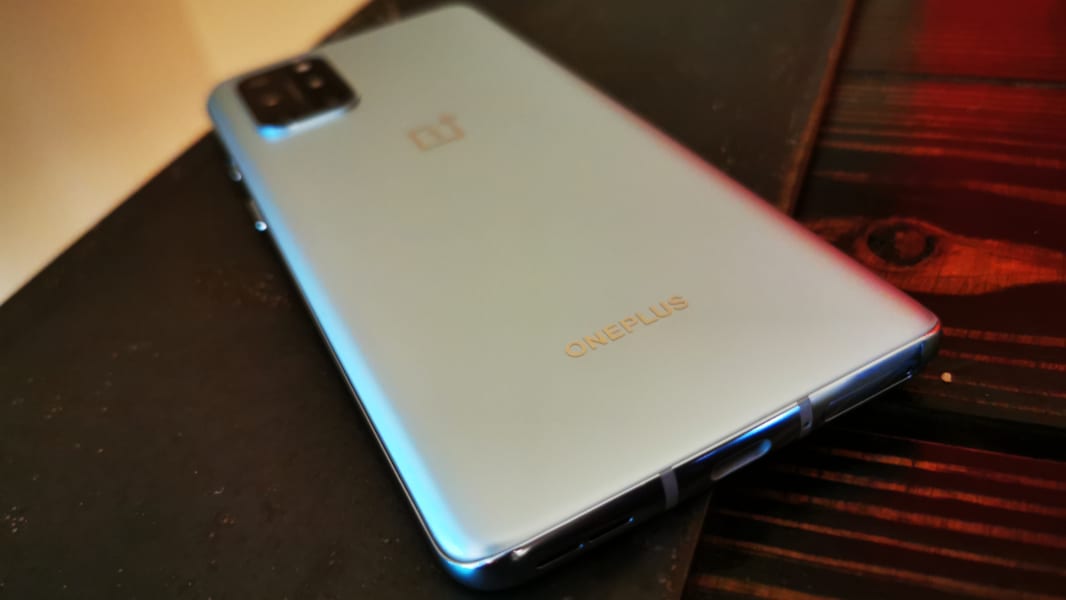
And … boy, is the OnePlus 8T a handsome device. There are two available colors, a matte Lunar Silver that I’m so happy to be reviewing and a shimmery Aquamarine Green. That latter choice doesn’t seem quite as out there as the Interstellar Glow option on the original OnePlus 8 but it’s still pretty bright and splashy-looking. That said, the OnePlus 8T is a glass and aluminum sandwich, like most of today’s smartphone flagships, so you’ll want to cover it with a case.
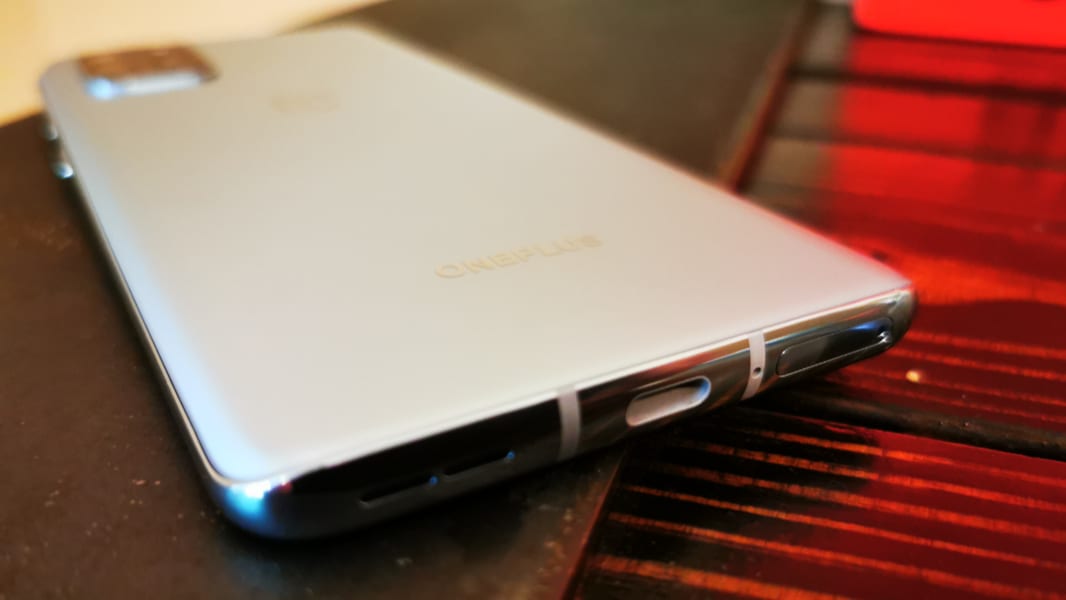
After the color and basic design, the next thing you’ll notice is the quad-camera array on the back. Unlike with previous OnePlus handsets, most notably the OnePlus 8 and 8 Pro, the camera module on the OnePlus 8T is a column of lenses not in the center top of the back of the device but is instead an array in the upper left. And it somewhat resembles the camera systems found on Samsung handsets. I assume that was the point, anyway, and while I was originally unsure of this design, it’s growing on me.
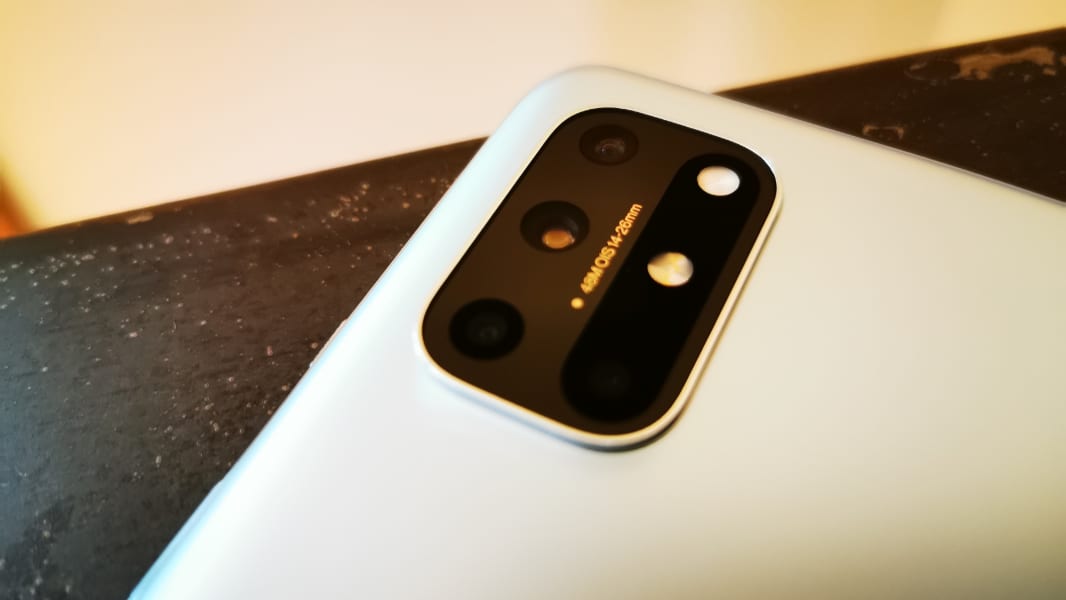
When you finally turn on the OnePlus 8T, you’ll get your first peek at what is perhaps its marquee external feature, a gorgeous 6.55-inch Full HD+ (2400 x 1080) Fluid AMOLED display with a smooth 120 Hz refresh rate, a tall and thin 20:9 aspect ratio, and HDR 10+ capabilities. Everything about this display is amazing, from its flat, form-fitting design with its reasonably small bezels to the elegant hole-punch in its upper-left for the selfie camera.

These things are, of course, subjective, but if you read my recent post Rethinking Display Size (Premium), you know that I’ve been trying to figure out the “perfect” display size—which is really size, diagonally, plus aspect ratio/tallness/thinness—and the OnePlus 8T is pretty much where it’s at for me at the moment. It’s tall, but also thin, and it’s flat with no curved edges, and so it should be much easier to use with a single hand.
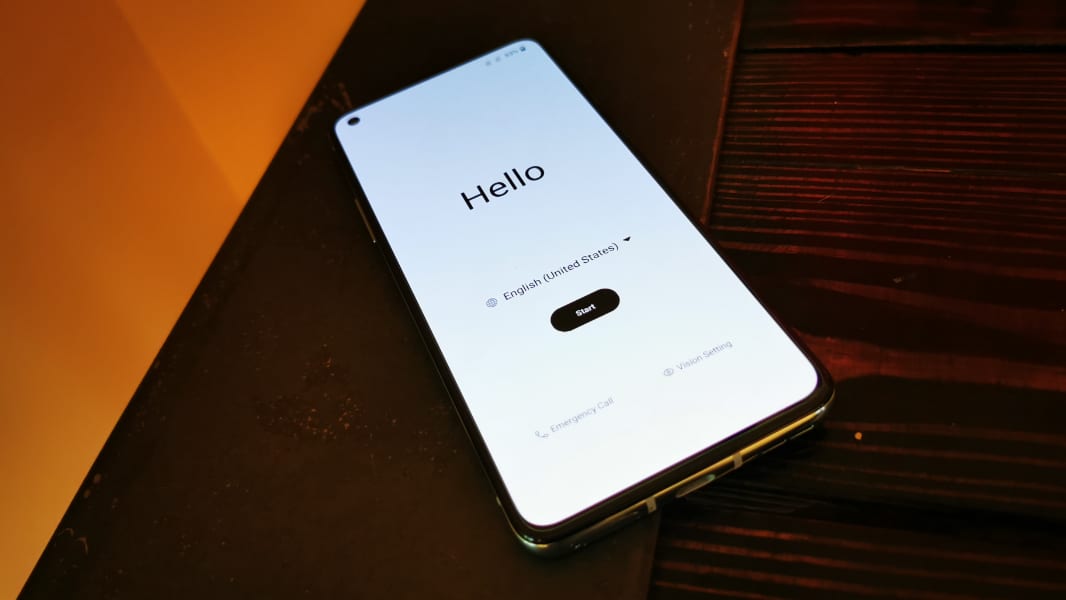
Internally, the OnePlus 8T delivers on the modern components one expects from a flagship, with a Qualcomm Snapdragon 865 processor and Adreno 650 graphics, a Qualcomm X55 modem for worldwide 5G compatibility, Wi-Fi 6, 8 or 12 GB of RAM, and 128 GB or 256 GB of UFS 3.1 two-lane storage. It is perhaps odd that OnePlus didn’t go with the newer but only slightly faster Snapdragon 865+, but the storage is a significant upgrade over the UFS 3.0 storage in the 8T’s predecessors and probably helps just as much.
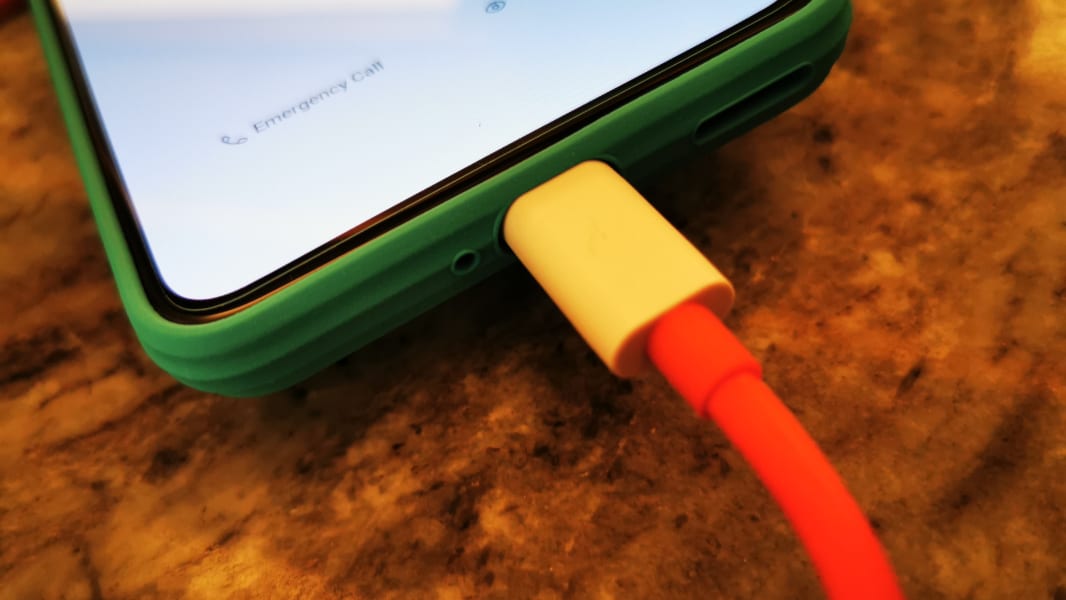
The battery is an ample 4500 mAh unit—actually, it’s two 2250 mAh batteries, as it turns out—so all-day battery life is assured, but the new fast-charging system is even more impressive. It’s called Warp Charge 65, and as the name suggests, that means it provides a whopping 65-watts of charging power, good to charge from 0 to 100 percent in just under 40 minutes. In the bad news department, however, the OnePlus 8T inexplicably doesn’t have any wireless charging capabilities. Even the OnePlus 8 provided up to 30-watts of wireless charging.

We should briefly discuss the camera system.
As you may recall, the original OnePlus 8 shipped with a triple-lens camera system with a 48 MP main (wide) lens with an f/1.8 aperture and Phase Detection Auto-Focus (PDAF) and optical image stabilization (OIS) capabilities, a 16 MP ultra-wide lens with an f/2.2 aperture and a 116-degree field-of-view, and a 2 MP macro lens with an f/2.4 aperture.
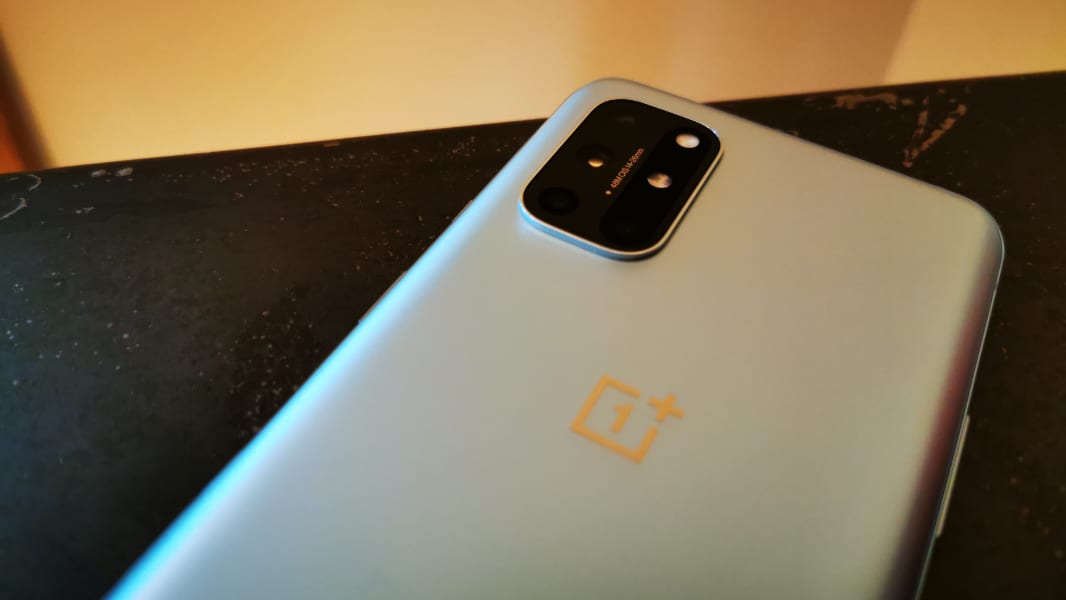
The OnePlus 8T has a few improvements and now offers a quad-camera setup. The main lens is identical to that on the OnePlus 8, but the ultra-wide offers a wider 123-degree field of view, albeit with the same resolution and aperture as before. The macro lens has been bumped up to 5 MP, with the same aperture as before. And there’s a new 2 MP monochrome lens with an f/2.4 aperture that could help with depth perception in portrait mode and other conditions.
The issue I have with this is that I expect a telephoto lens with optical zoom with a quad-camera configuration, and while OnePlus’ previous telephoto efforts, such as with the OnePlus 8 Pro, were lackluster at best, such a lens would still be preferable to the macro and monochrome lenses that the OnePlus 8T does include.
I’m not writing off the OnePlus 8T camera system, however. OnePlus says that it has enhanced its computational photography capabilities, and that the 8T should deliver improved low-light shots, more vivid colors, and more detailed images. There are also improvements to the handset’s video capabilities, like feature focus tracking to prevent unintentional panning, portrait bokeh with blurred backgrounds, gimbal-like smoothness, and low-light enhancements.
Other hardware features to examine include the in-display fingerprint reader, which has been excellent on previous OnePlus handsets, and the stereo speakers with Dolby Atmos support. And let’s not forget that unique OnePlus alert slider. There’s no headphone jack.

The OnePlus software experience is always a highlight. Unlike other smartphone makers, which often bulk up Android with unnecessary duplicative apps and services, OnePlus OxygenOS is in many ways more optimized and efficient than stock Android. And the OnePlus 8T is the first OnePlus handset to ship with OxygenOS 11, which includes an improved design with dark mode and one-handed use enhancements, a cool new Always-On Display (AOD) feature with multiple themes, and numerous other additions. There’s a lot to examine here.
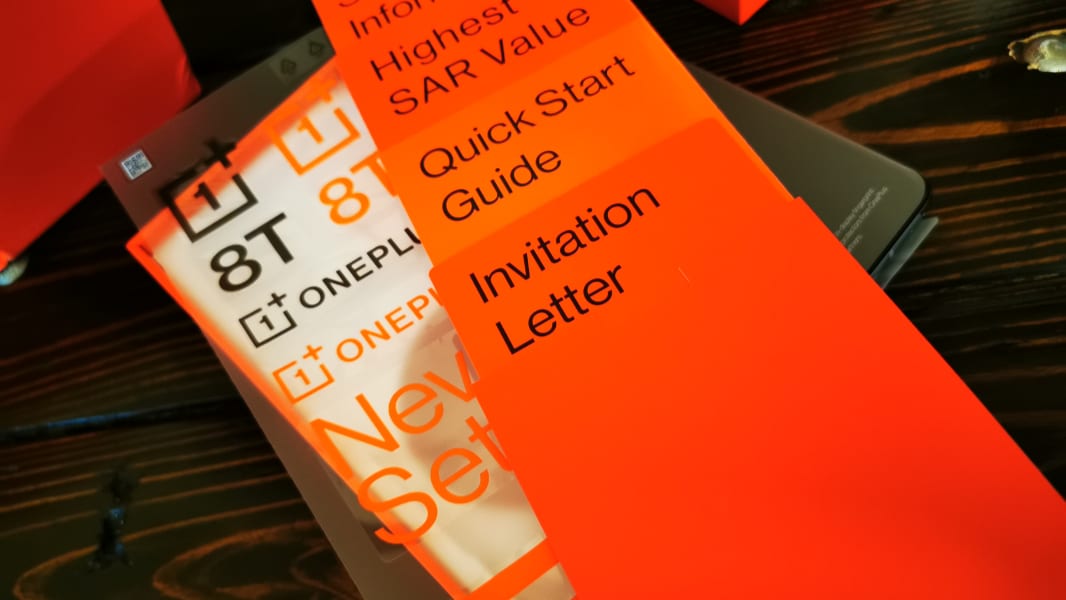
The OnePlus 8T costs $749 here in the United States for the 12 GB/256 GB configuration. That seems like a great price, and while the Samsung Galaxy S20 FE is $40 less, OnePlus has the better components overall, aside, perhaps, from the cameras. It also seems to line up nicely against the new iPhone 12, which starts at $799, especially if you prefer the larger display.
More soon.